- Home
- Graham Hancock
Magicians of the Gods: The Forgotten Wisdom of Earth's Lost Civilization Page 17
Magicians of the Gods: The Forgotten Wisdom of Earth's Lost Civilization Read online
Page 17
Their purpose in doing so was nothing less than to recreate and revivify the essence of their lost homeland,10 to bring about, in short:
The resurrection of the former world of the gods …11 The re-creation of a destroyed world.12
The general tone, as Egyptologist Eve Anne Elizabeth Reymond confirms in her masterful study of the Edfu Building Texts, conveys the view that “an ancient world, having been constituted, was destroyed and as a dead world it came to be the basis of a new period of creation which at first was the re-creation and resurrection of what once had existed in the past.”13
Important in the evaluation of the texts is the realization that they were not composed in the historical temple. On the contrary, as Reymond informs us, the priests and scribes of Edfu merely copied what they regarded as the more important extracts from a vast archive of ancient documents that they had at their disposal.14 By the fifth century AD the weight of Roman and Christian fanaticism had brought about the final collapse of Ancient Egyptian civilization.15 Thereafter (with Islamic hatred of the past soon making things even worse) care ceased to be taken of the temples which were used as storerooms, stables and homes by local people who no longer venerated the ancient gods. In 1837 the English explorer Howard Vyse visited Edfu and described the mess that he found inside:
The temple itself, one of the most imposing in Egypt, affords a striking contrast to the miserable hovels, many of which are built upon it, and others on vast mounds of rubbish with which it is surrounded. The interior, covered with painted hieroglyphics, has been divided by earthen walls to form a magazine for corn, and beneath it are enormous substructions which I entered by a hole from an Arab house. They were full of dirt and filth of every description, but had been built in the most solid manner …16
Fortunate for us, then, when Edfu still thrived, that priests and scribes who could read the mysterious texts in the temple’s library committed themselves to the project of selecting extracts and carving them deeply into the “solid” and “imposing” walls of the temple itself. In so doing, whether by accident or design, they ensured that at least these fragments have survived to the present day, whereas the original source documents—looted, used as kindling, thrown into the Nile during the centuries of neglect and mistreatment—have long gone.
Inevitably, since they lack their original context, the fragments are often confusing and deeply tantalizing. Even so, they give us a glimpse into wonders and secrets of our past that the source documents—if only we had them!—might have revealed to us much more completely.
Atlantis in Egypt
The famed Greek philosopher Plato, who passed down to us the extraordinary story of Atlantis destroyed in a terrible cataclysm of flood and fire 9,000 years before the time of Solon—i.e. in 9600 BC in our calendar—is generally regarded by archaeologists as having made up the whole tale of the lost Ice Age civilization. The fallback position, among those grudgingly willing to admit some veracity to the information conveyed in the Timaeus and Critias, is that Plato had perhaps based his account on a much more recent cataclysm centered on the Mediterranean—for example the eruption of Thera (Santorini) in the mid-second millenium BC. The notion of a global disaster more than 11,000 years ago, and particularly the heretical idea that it could have wiped out a high civilization of that epoch, is strenuously resisted and indeed ridiculed by the archaeological establishment because, of course, archaeologists claim to “know” that there was not, and never under any circumstances could have been, a high civilization at that time.
They “know” this not because of any hard evidence which absolutely rules out the existence of an Atlantis-type civilization in the Upper Paleolithic, but rather on the general principle that the result of less than two hundred years of “scientific” archaeology is an agreed time-line for civilization that sees our ancestors moving smoothly out of the Upper Palaeolithic, into the Neolithic (both, by definition, Stone Age cultures) at around 9600 BC, and thence onward through the development and perfection of agriculture in the millennia that followed—a process that also witnessed the founding of some very large permanent settlements such as Catalhoyuk in Turkey around 7500 BC.
By about 4000 BC the increasing sophistication of economic and social structures, and growing organizational abilities, made possible the creation of the earliest megalithic sites (such as Gigantija on the Maltese island of Gozo, for example) while the first city-states emerged around 3500 BC in Mesopotamia and the Indus Valley and soon afterward in Egypt and on the other side of the world in Peru.17 The Pyramids of Giza are megalithic monuments; so too the Great Sphinx. In the British Isles, Callanish in the Outer Hebrides and Avebury in southwest England, both dated to around 3000 BC, are the oldest examples of true megalithic sites. The megalithic phase of Stonehenge is thought to have begun around 2400 BC and to have continued to around 1800 BC.
Within this well-worked-out and long-established chronology there is simply no room for any prehistoric civilization such as Atlantis, hence the wish of the mainstream to dismiss Plato’s “outlandish” story by any and every possible means. These means include ridicule of the supposed “Egyptian” basis for the tale—specifically, of the claim, made in the Timaeus, that priests of Sais in the Delta said Atlantis, and its cruel fate, were described in “sacred records”18 in their Temple going back thousands of years before the established beginning of Egyptian civilization in the late fourth millenium BC.19 To those wedded to the orthodox chronology, the very idea that the priests of Sais might have given Solon a true account of such “impossible” records, which in due course reached Plato, seems preposterous—an obvious historical oxymoron which deserves only to be ignored. Furthermore the claim is frequently made that there are no references to Atlantis anywhere in surviving Ancient Egyptian papyri and inscriptions.
Only one Egyptologist, the late Professor John Gwyn Griffiths of the University of Wales at Swansea (who passed away in 2004) had the courage to challenge the consensus. The challenge he presented, however, had nothing to do with the fundamental point of whether Atlantis existed and was destroyed in the tenth millenium BC, but rather with the lesser point of whether Plato, through his ancestor Solon, could indeed have been influenced by genuine Ancient Egyptian traditions.20 Oddly enough for so learned a man, Griffiths seems to have known nothing of Edfu with its tempting account of a sacred island inhabited by “gods” and destroyed by flood and fire in primeval times—an obvious prototype for Plato’s Atlantis, as we shall see. The Professor’s focus, instead, was on a papyrus, catalogued as P. Leningrad 1115 and now kept in Moscow, which contains an intriguing prose story known as the Tale of the Shipwrecked Sailor. In this “fairytale,” dating to Egypt’s Middle Kingdom between 2000 BC and 1700 BC, Griffiths—quite correctly in my view—did find convincing resemblances to Plato’s account of Atlantis.
The eponymous “shipwrecked sailor” in the papyrus tells us of a time when he made a voyage in a great ocean-going vessel that was struck by a giant wave:
Then the ship died. Of those in it not one remained. I was cast on an island by the sea. I spent three days alone … Lying in the shelter of trees, I hugged the shade … Then I stretched my legs to discover what I might put in my mouth. I found figs and grapes there, all sorts of fine vegetables, sycamore figs … and cucumbers that were as if tended. Fish there were and fowl; there is nothing that was not there. I stuffed myself and put some down, because I had too much in my arms.21
The shipwrecked sailor cuts a fire drill, makes fire and gives a burned offering to the gods:
Then I heard a thundering noise … Trees splintered, the ground trembled. Uncovering my face, I found it was a snake that was coming. He was of thirty cubits [15 meters or 50 feet] … His body was overlaid with gold; his eyebrows were of real lapis lazuli … Then he took me in his mouth and carried me to the place where he lived, and set me down unhurt …22
The serpent questions the sailor on how he came to be on the island and on hearing his reply, tells him not t
o be afraid:
It is a god who has let you live and brought you to this Island of the Ka. There is nothing that is not upon it; it is full of good things …
The name “Island of the Ka” is “curious” notes Miriam Lichtheim, the translator of the tale. She adds that the renowned Egyptologist Sir Alan Gardiner “rendered it as ‘phantom island.’”23 It is beyond the scope of this book to present a detailed treatise on the concept of the Ka—the “double,” the astral or spiritual essence of a person or thing. It existed with the human being during his or her mortal life but was “the superior power in the realms beyond the grave.” Indeed, the term for death in the Ancient Egyptian language meant “Going to one’s ka,” or “Going to one’s ka in the sky.”24 The gods were also believed to have their kas and so, too, were the great monuments of Egypt. Of particular relevance here is that the high god Osiris, lord of the celestial afterlife kingdom known as the Duat, was always referred to as “the Ka of the Pyramids” of Giza:25
The Ka entered eternity before its human host, having served its function by walking at the human’s side to urge kindness, quietude, honor and compassion. Throughout the life of the human, the Ka was the conscience, the guardian, the guide. After death, however, the Ka became supreme …26
With this in mind, Gardiner’s suggestion that a “phantom island” is implicated in the Tale of the Shipwrecked Sailor, makes sense. The sailor has set out in a boat from the physical realm of Middle Kingdom Egypt, but he has been cast ashore on “the Island of the Ka,” a ghost realm—a place that no longer exists in this world except in the form of its spiritual essence.
The same theme continues as the huge snake that rules the island tells the sailor his sad story:
I was here with my brothers and there were children with them. In all we were seventy-five serpents, children and brothers without mentioning a little daughter whom I had obtained through prayer. Then a star fell, and they went up in flames through it. It so happened that I was not with them in the fire. I was not among them. I could have died for their sake when I found them as one heap of corpses.27
In due course a ship passes by and the sailor is rescued. The snake-king of the island sends him away with rich presents—myrrh, oils, laudanum, spices, “perfume, eye-paint, giraffe’s tails, great lumps of incense, elephant’s tusks, grayhounds, monkeys, baboons, and all kinds of precious things.”28 The sailor, filled with gratitude, wants to return with gifts from Egypt, but before he boards the ship the serpent takes him aside and tells him:
When you have left this place, you will not see this island again; it will have become water.29
The comparisons with Plato’s story of Atlantis that John Gwyn Griffiths draws relate primarily to the rich variety of plant and animal life, including the elephants said to be found on both islands. Here’s Plato on Atlantis:
There were a great number of elephants in the island; for as there was provision for all other sorts of animals, both for those which live in lakes and marshes and rivers, and also for those which live in mountains and on plains, so there was for the animal which is the largest and most voracious of all. Also whatever fragrant things there now are in the earth, whether roots, or herbage, or woods, or essences which distil from fruit and flower, grew and thrived in that land; also the fruit which admits of cultivation, both the dry sort, which is given us for nourishment and any other which we use for food—we call them all by the common name “pulse”—and the fruits having a hard rind, affording drinks and meats and ointments … all these that sacred island which then beheld the light of the sun, brought forth fair and wondrous and in infinite abundance. With such blessings the earth freely furnished them …30
In addition there is the fact that Atlantis is a sacred island and so, too, of course, is the Island of the Ka, to which the shipwrecked sailor has been brought by a god. The closest resemblance by far, however, is in the fate of Atlantis which was “swallowed up by the sea and vanished,”31 just as the Island of the Ka would never be seen again because it had “become water.”
Taking such elements into account Griffiths concludes that although Plato’s story may “not derive from Egypt in toto,” it nonetheless, most certainly owes a “conceptual debt to Egypt.”32 His argument is well made, but if he had been familiar with the Edfu Building Texts he might, I think, have stated his case more strongly.
Bringing some threads together
We no longer have access to the sacred records once kept at the Temple of Sais in the Delta that Plato tells us contained the story of Atlantis. That temple, which Solon visited around 600 BC, was dedicated to the goddess Neith and was extremely ancient, dating back at least as far as the First Dynasty, circa 3200 BC.33 Unfortunately it had been completely destroyed by AD 1400, leaving only rubbish heaps and a few scattered blocks on the site that is today occupied by the village of Sa el Hagar.34 At Edfu, on the other hand, although the original sacred records are also gone, the extracts preserved in the Building Texts do seem to tell essentially the same story that Solon heard and passed on to Plato and that Griffiths argues also reaches us, albeit in a more fragmentary and literary form, in the Tale of the Shipwrecked Sailor.
We’ve already seen that the Homeland of the Primeval Ones in the Edfu texts is described as a sacred island in the midst of a great ocean, so a comparison to the Island of the Ka in the Tale of the Shipwrecked Sailor is obvious at the level of the basic geographical setting. The resemblance goes deeper than this, however, since there are many passages in the Building Texts which make it clear that the first and original god who presided over the Homeland of the Primeval Ones was “a dead deity, the Ka.”35 Indeed, we read that the island was also known as the “Home of the Ka”36 and that “the Ka ruled therein”37—“this Ka who dwelt among the reeds of the island.”38 In other words, the Homeland of the Primeval Ones in the Edfu texts is nothing more nor less than the Island of the Ka and, to the extent that Griffiths is correct to see a prototype for Plato’s Atlantis in the Island of the Ka, then the Homeland of the Primeval Ones is also a prototype.
What helps to firm up the comparison are certain details given in the Building Texts that do not appear in the Tale of the Shipwrecked Sailor. Of particular interest is a passage at Edfu in which we read of a circular, water-filled “channel” surrounding the original sacred domain that lay at the heart of the island of the Primeval Ones—a ring of water that was intended to fortify and protect that domain.39 In this there is, of course, a direct parallel to Atlantis, where the sacred domain on which stood the temple and palace of the god, whom Plato names as “Poseidon,” was likewise surrounded by a ring of water, itself placed in the midst of further such concentric rings separated by rings of land, again with the purpose of fortification and protection.40
Other details are found in all three stories. For example, the striking parallel between the inundation of the island of Atlantis as Plato recounts it, and the inundation of the Island of the Ka in the Tale of the Shipwrecked Sailor, is eerily duplicated in the inundation of the Homeland of the Primeval Ones as described in the Edfu texts where we read of an upheaval:
so violent that it destroyed the sacred land …41 The primeval water … submerged the island … and the island became the tomb of the original divine inhabitants …42 the Homeland ended in darkness beneath the primeval waters.43
Compare this with Plato who tells us of “earthquakes and floods of extraordinary violence”44 as a result of which:
in a single terrible day and night … the island of Atlantis was … swallowed up by the sea and vanished.45
Intriguingly, Plato also hints at the immediate cause of the earthquakes and floods that destroyed Atlantis. In the Timaeus, as a prelude to his account of the lost civilization and its demise, he reports that the Egyptian priests from whom Solon received the story began by speaking of a celestial cataclysm:
There have been and will be many different calamities to destroy mankind, the greatest of them being by fire and water, lesser ones by
countless other means. Your own [i.e. the Greeks’] story of how Phaethon, child of the sun, harnessed his father’s chariot, but was unable to guide it along his father’s course and so burned up things on earth and was himself destroyed by a thunderbolt, is a mythical version of the truth that there is at long intervals a variation in the course of the heavenly bodies and a consequent widespread destruction by fire of things on earth.46
In the Tale of the Shipwrecked Sailor, too, we find that a celestial cataclysm plays a part. As the reader will recall, the serpent king speaks of the destruction of his race when “a star fell, and they went up in flames through it.” The same ominous agency turns up in the Edfu Building Texts where a serpent is again invoked, but with the significant twist that here it is not the sad and wise ruler of the island but rather the fatal “enemy” of the island and its divine inhabitants.47 To place what the Edfu texts have to say about this in a wider context, let us first revisit the Zoroastrian tradition of an “evil spirit” that:
sprang like a snake out of the sky down to the earth … He rushed in at noon, and thereby the sky was as shattered and frightened by him as a sheep by a wolf. He came onto the water which was arranged below the earth, and then the middle of this earth was pierced and entered by him … He rushed out upon the whole creation and he made the world quite as injured and dark at midday as though it were dark night.48
To my mind, as I argued in Chapter Seven, what we have here is “a mythical version of the truth”—with the underlying truth being a cataclysmic encounter with a comet. Now let’s look at the relevant passages from the Edfu Building Texts where a snake called the nhp-wer, the “Great Leaping One,” is described as “the chief enemy of the god.”49 It is his “assault” that causes the Homeland of the Primeval Ones to be swallowed up by the sea, but first the feet of the deity of the island—the Ka, here explicitly described as the “Earth God”50—are “pierced, and the domain was split.”51

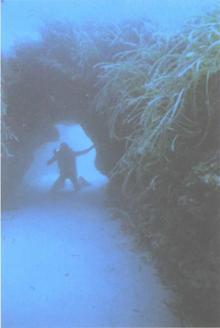 Underworld: The Mysterious Origins of Civilization
Underworld: The Mysterious Origins of Civilization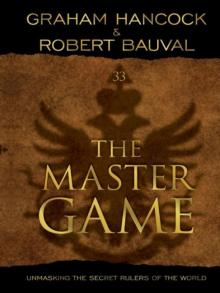 The Master Game: Unmasking the Secret Rulers of the World
The Master Game: Unmasking the Secret Rulers of the World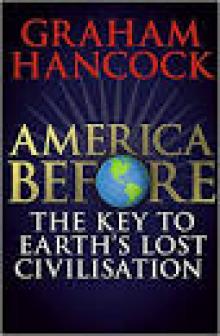 America Before
America Before Entangled
Entangled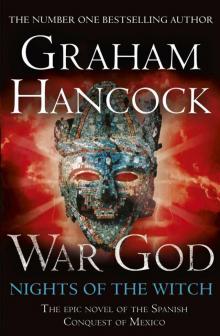 War God: Nights of the Witch
War God: Nights of the Witch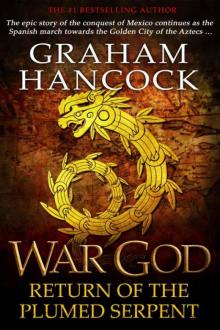 War God: Return of the Plumed Serpent
War God: Return of the Plumed Serpent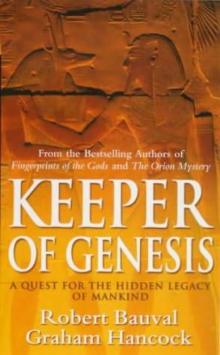 The Message of the Sphinx AKA Keeper of Genesis
The Message of the Sphinx AKA Keeper of Genesis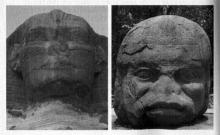 Fingerprints of the Gods
Fingerprints of the Gods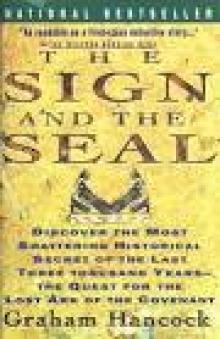 The Sign and the Seal
The Sign and the Seal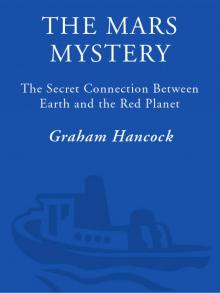 The Mars Mystery: The Secret Connection Between Earth and the Red Planet
The Mars Mystery: The Secret Connection Between Earth and the Red Planet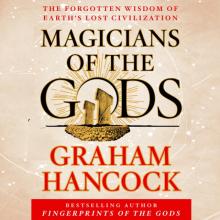 Magicians of the Gods: The Forgotten Wisdom of Earth's Lost Civilization
Magicians of the Gods: The Forgotten Wisdom of Earth's Lost Civilization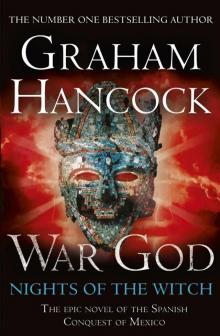 War God
War God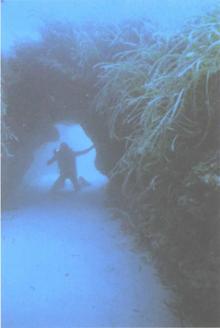 Underworld
Underworld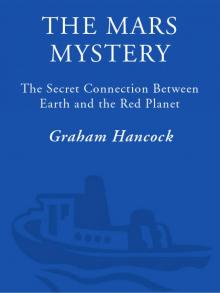 The Mars Mystery
The Mars Mystery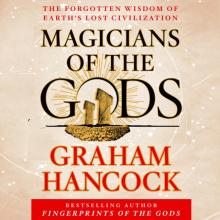 Magicians of the Gods
Magicians of the Gods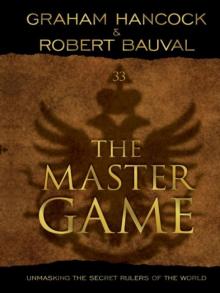 The Master Game
The Master Game